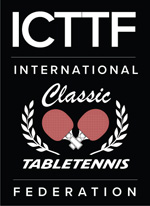Hidden Service Rules
From the just-received Nov/Dec 2011 issue of USATT Magazine, page 62, from the An Official's View article by International Umpire Joseph C. H. Lee:
[He quotes a service rule.] "From the start of service until it is struck, the ball ... shall not be hidden from the receiver by the server or his or her doubles partner or by anything they wear or carry."
[He quotes another service rule.] "It is the responsibility of the player to serve so that the umpire or the assistant umpire can be satisfied that he or she complies with the requirements of the Laws, and either may decide that a service is incorrect."
"From the umpire’s angle, sometimes it is difficult to determine whether or not the serve is hidden from the receiver. It is the server’s responsibility, however, to demonstrate to the umpire or the assistant umpire that the serve conforms to all aspects of the service rules."
He concludes with this:
"...the server must make sure the umpire can observe the entire motion of the serve, including the moment when the racket strikes the ball. If the umpire is unable to observe the serve, he/she will give a warning and the server had better comply in subsequent serves."
Bingo. Why is it so many umpires refuse to enforce the hidden serve rule? As International Umpire Joseph Lee writes above, if the umpire can't see that the serve is visible, then he gives a warning, and if it happens again, it's a fault. It's not complicated.
I've blogged about this a number of times. Will it be enforced at the Nationals next week? I sure hope so. If not, then umpires are allowing players to win by cheating, and penalizing the ones who do not cheat. If not enforced, it likely will be the difference between a player winning a championship or making a USA Team or going home frustrated because he was cheated out of these things.


 Photo by Donna Sakai
Photo by Donna Sakai




